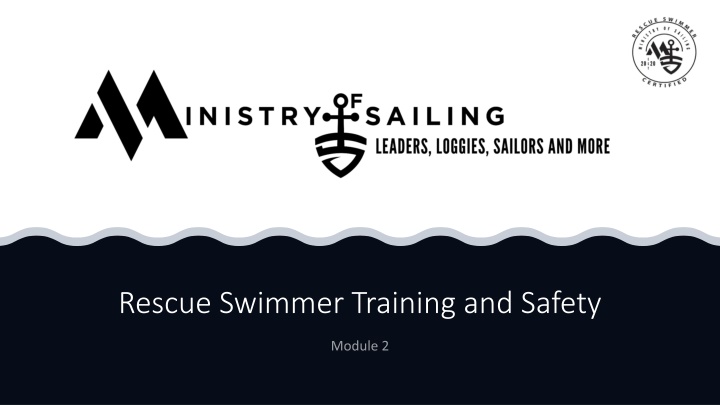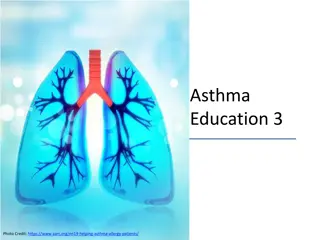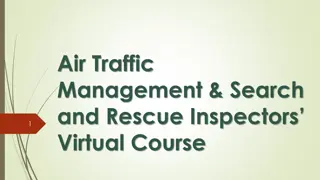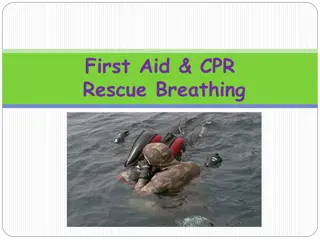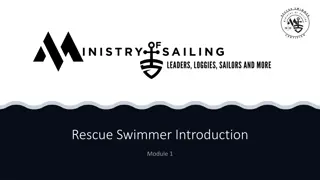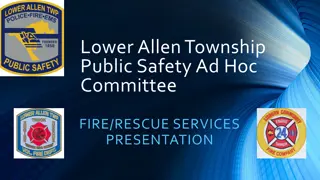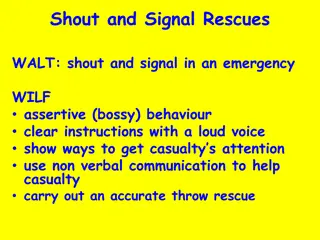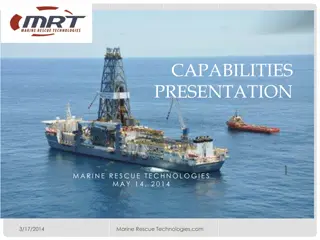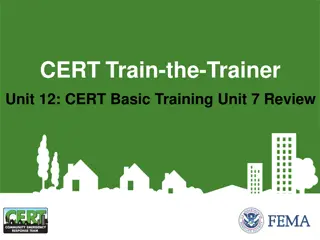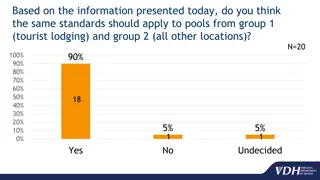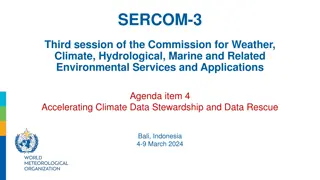Comprehensive Rescue Swimmer Training and Safety Guide
Learn about the essential aspects of rescue swimmer deployment, task organization, communication, and safety in various scenarios. Explore the five phases of rescue swimmer deployment, including preparation, rapid assessment, approach, and deployment strategies. Discover key elements like conducting After-Action Reviews, creating a safety ethos on a vessel, and understanding the impact of water temperature on the person in water. This comprehensive guide equips individuals with the knowledge and skills needed for effective rescue swimmer operations.
Download Presentation

Please find below an Image/Link to download the presentation.
The content on the website is provided AS IS for your information and personal use only. It may not be sold, licensed, or shared on other websites without obtaining consent from the author.If you encounter any issues during the download, it is possible that the publisher has removed the file from their server.
You are allowed to download the files provided on this website for personal or commercial use, subject to the condition that they are used lawfully. All files are the property of their respective owners.
The content on the website is provided AS IS for your information and personal use only. It may not be sold, licensed, or shared on other websites without obtaining consent from the author.
E N D
Presentation Transcript
Learning Objectives Rescue Swimmers will demonstrate knowledge and understanding of: Five phases of Rescue Swimmer (RS) Deployment Task organization and Preparation of the RS Three scenarios in which an RS is deployed The importance of conducting an After-Action Review Key elements that differentiate a Rescue Swimmer COB briefing from a traditional one How to create a safety ethos on a vessel Aspects of the Constant Briefing technique Impact of water temperature to the PIW The role of the navigator in a COB The use a PAN PAN or a MAYDAY Radio Call
The Five Phases of Rescue Swimmer Deployment
Skipper/Watch Captain direct safety preparation prior to leaving the dock. Task Organization/Preparation 1) Establish Constant Communications with RS. 2) Identify the Ready Halyards . Rig the rescue line fastest winch (be prepared to attach the recovery line to the RS) Prep team off watch (Who). First Aid/Warming (Who). Radio/DSC Positions (Who and How). Who is in Charge of Communications . Navigation (Who). 3) Helm Prep and Nav Plan? What is the rescue plan? Make sure it is communicated! 4) CREWOVERBOARD Deploy the RS is a Skipper decision (Input with WC and RS). Phase One - Preparation and Planning Deployment 5) With any COB, the RS begins suiting up when feasible.
Assess the PIW - well-being? - Personal Protection Equipment (PPE)? - Conditions and Scenario Scenario - Conscious, No PPE. (First Chance Last Chance?) - Conscious with PPE. - Unconscious with PPE (or injured) and or Incapacitated/Unconscious. Phase Two - Rapid Assessment PIW with PPE: It is important that each crew has the exact same PPE set up. Each PFD should be identical and the equipment for each should also be similar. (Note - Procedures in the following segments.) What is the approach of the helmsman, strategy, and RS deployment plan? Understand that the conditions whichmay dictate that the situation may be a first chance/last chance. (IDR Drowning)
The Rescue Swimmer will make recommendations how to position the vessel as close as possible to affect a positive outcome. Phase Three - Approach & Deploy The Skipper, Watch Captain and Rescue Swimmer will then communicate the strategy to deploy the Rescue Swimmer.
The final hoist retrieving both sailors. Assessment Hypothermia: Organize Medical Evacuation as needed Uncontrolled shivering. Mental confusion. Slurring words. Lack of coordination. (extreme cold, a loss of the ability to shiver) Phase Four - Rescue and Aftercare
Immediate - After the situation is normalized, the resident expert (RS/Skipper) will conduct a review of the incident to ensure the situation(s) that caused the COB are communicated and controlled so that a repetitive incident does not end with the same result. Phase Five - Hot Wash AAR Post Incident - Once ashore, a more thorough Hotwash/AAR can take place with a full team review. (Samples provided in the back of the handbook).
Mastery of Crew and Boat Readiness requires constant communication. A resounding echo or a continuous mantra needs to be expressed throughout the sail. Safety must be constantly monitored and briefed as situations change. This only occurs if this is part of a job description (the Rescue Swimmer/Safety Officer). Creating a Safety Ethos Constant Briefing - Continualverbal commands and readiness cues lead by the Skipper, Watch Captain and Rescue Swimmer to ensure that the team understands maintaining safety and which tools are availible if needed. Halyards are critical tools to be used in rescue operations Each peel, tack, jibe and sail re-configuration should be followed by reminders of the free halyard and clutch to be used in the event of an emergency.
Temperature F Immobility Expected Survival Time 32.5 Under 15 Minutes Under 15 45 Minutes 32.5 - 40 15 30 Minutes 30 80 Minutes Water Temperature Impact 40 - 50 30 60 Minutes 1 3 Hours 50 - 60 1 2 Hours 2 6 Hours 60 - 70 2 7 Hours 3 40 Hours 70 - 80 3 12 Hours 3 Hours - Indefinite 80 Indefinite
HIT COB Button!!! It can take up to a 30 minutes to control a vessel to make the recovery turn . The Navigator will: Determine the course. Search pattern. The Navigator Plays a Critical Role and Communicate on availible Radio and Sat Com. Record the COB lat/long position (on a piece of white tape) and mark it as COB position. Upon hearing any PAN-PAN or May-Day, the Navigator will need to capture the important information, mark boat s position (for Redress ), and ensure the team is briefed on the situation if a position to assist.
When the COB is visible hail PAN PAN and trigger COB and the DSC. It is critical to understand that the GPS of a boat is integrated into the DSC. COB - PAN PAN or a MAYDAY Radio Call? Use a MAYDAY call when the PIW the COB is not visible.
Radio Call while Deploying a Rescue Swimmer
